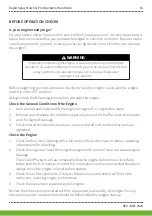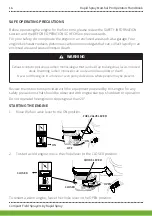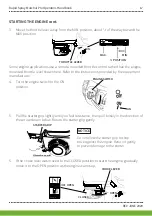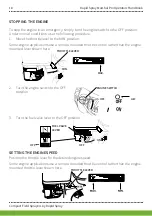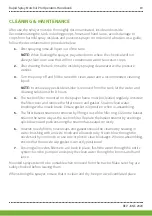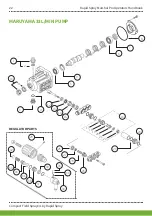
REV JUNE 2020
Rapid Spray Marshal Pro Operators Handbook
7
CALIBRATION GUIDE
Accurate calibration is an essential element of any spraying function as it ensure that the
pesticide is applied at the rate as recommended by the product manufacturer. Application
in excess of the recommended rate is prohibited, can damage crops and is uneconomical.
View the products packaging for recommended spraying applications.
Calibration must always be carried out:
•
Spraying for the first time with new spray equipment
•
At the beginning of each season
•
After changes of nozzle tips, spraying pressure or speed
•
After every 100 hectares of spraying
•
Changes in pesticide
NOTE:
When calibrating a sprayer, appropriate personal protective wear should be worn.
STEP-BY-STEP CALIBRATION GUIDE
EXAMPLE
Read the label.
Find the
following:
Spray Volume (VOLUME)
Product Dose
Spray QUALITY
200L / hectare
50L / hectare
Medium
Measure:
Time / 100m
Measure time to spray 100m in seconds over land similar
to that which will be sprayed.
41.9 seconds
Calculate:
SPEED
Speed (km/h) = 360 divided by time (seconds)
360 = 8.6km/h
41.9
Measure nozzle
SPACING
Distance between each nozzle
0.5m
Measure:
L/min OUTPUT
Output = VOLUME x SPEED x SPACE ÷ 600
(L/min) (L/hectare)
(km/h) (metre)
200 x 8.6 x 0.5 ÷ 600
Output = 1.433L/min
Choose
NOZZLE
Refer to nozzle manufacturers data charts or other sources and select the size
and type of nozzle that will product the calculated OUTPUT and spray QUALITY
Now, check the calibration on the sprayer.
Check Nozzle
OUTPUT
With water, check outputs of 4 or more nozzles using a
calibrated jug or flow meter. Check all nozzles are aligned
correctly and spray patterns are good.
Average Output
= 41.9L/minute
Calibrate
Sprayer
SPRAY VOLUME = OUTPUT x 600 ÷ SPEED ÷ SPACE
(L/min) (km/H) (metre)
1.4 x 600 ÷ 8.6 ÷ 0.5 =
195
If, as in the example, the nozzle output and therefore, spray volume, is less than the recommended
figures, increase the pressure and repeat calibration until target spray volume is reached.

















